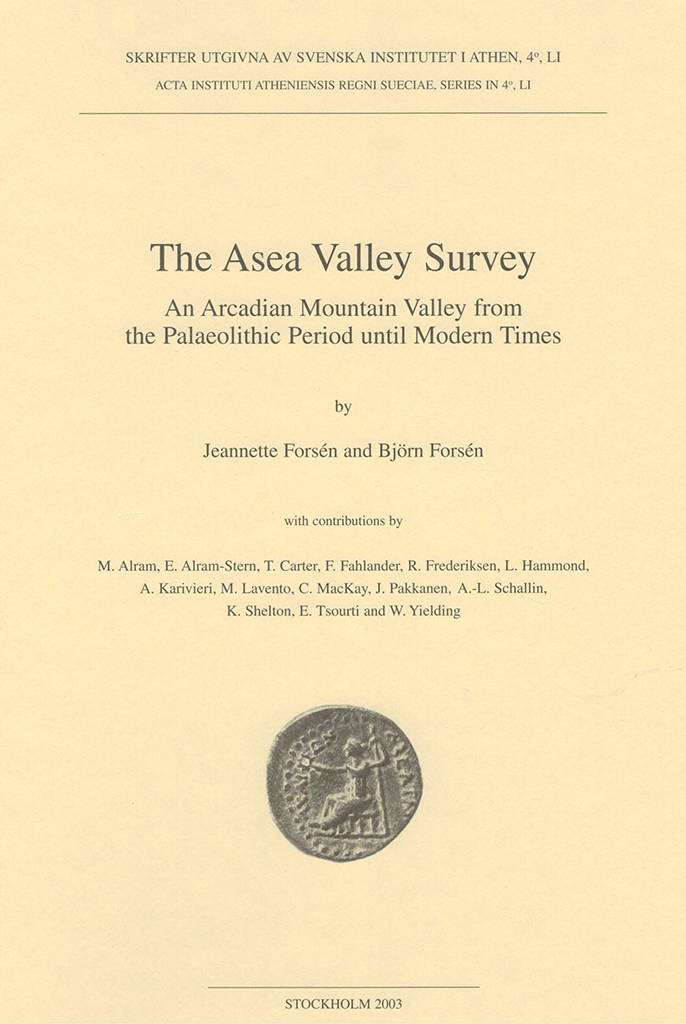Agios Elias of Asea, Arcadia Vol. 1. Agios Elias of Asea, Arcadia. From early sanctuary to medieval village Edited by Jeannette Forsén Distributed by Eddy.se AB. Also available at Amazon.com, Adlibris, and Bokus. A brief four-week excavation campaign in 1997 at the temple on top of the mountain of Agios Elias at Asea produced abundant archaeological material which partly is presented in this study, along with a stratigraphic report of part of the excavated area. The pottery, miniature vessels, miscellaneous terracotta finds, roof tiles, faunal and human bones, glass, coins, sculpture and miscellaneous stone objects are included in the present work. The first focus of activities at the site took place around c. 720–690 BC (Early Protocorinthian). No architecture was found in connection with this period. However, roof tiles of a temple and some auxiliary buildings from c. 590–560 BC (Middle Corinthian–Late Corinthian I) are accompanied by a large amount of pottery which point at a second floruit of the site during this period. Some of the pottery is local/regional, with other examples originating from many parts of southern Greece in addition to Attica and possibly East Greece as well. During the 14th century AD a village, named Kandreva, and…
Distributed by Astrom Editions. See record at WorldCat. The Asea Valley Survey. An Arcadian mountain valley from the Paleolithic period until modern times By Jeannette Forsén & Björn Forsén, with contributions by Michael Alram, Eva Alram-Stern, Tristan Carter, Fredrik Fahlander, Rune Frederiksen, Leslie Hammond, Arja Karivieri, Mika Lavento, Camilla MacKay, Jari Pakkanen, Ann-Louise Schallin, Kim S. Shelton, Eos Tsourti & Wendy Yielding This volume presents the finds of the Asea Valley Survey (AVS) carried out 1994–1996 in a mountain valley of Arcadia with the acropolis of Asea, the Palaeokastro, as its focal point. During these three seasons of archaeological surface survey 18.7 km2 of the valley were searched intensively in foot. Artefacts spanning from the Middle Palaeolithic period to the early 19th century were systematically collected and documented. Concurrently a geological team gathered data concerning the ever-changing landscape of the valley. By combining new archaeological and geological data with ancient, Byzantine, Ottoman and Venetian written sources the diachronic history of the Asea valley was reconstructed. Through the discovery of a Middle–Upper Palaeolithic site the regional history has been pushed back to about 50,000 BP. Furthermore, a handful of Early–Middle Neolithic lakeside sites, which produced nothing but chipped stone, may be…


